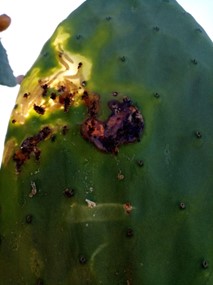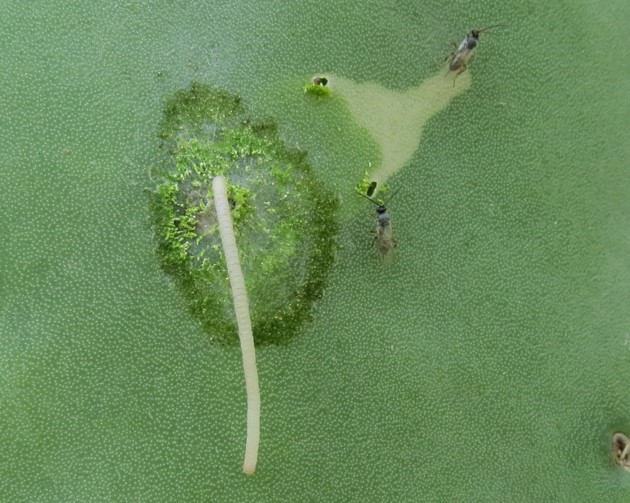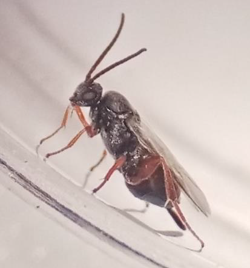A South American Parasitoid Could be Close to Release Against the Cactus Moth
By Laura Varone and Mariel Guala
Cacti belonging to the Opuntia genus, commonly known as prickly pears, are a crucial part of the desert ecosystems, as well as important traditional crops, in North America. However, a South American moth known as the cactus moth, Cactoblastis cactorum, is posing a serious threat to over 80 native Opuntia species in the USA and Mexico. The moth larvae feed as a colony while tunneling through a cactus pad, consuming the interior and eventually killing the whole plant. The continued expansion of this insect is alarming and could lead to negative changes in the arid and semiarid ecosystems of USA and Mexico.
Widespread application of insecticides is not recommended and is not safe for the environments where these cacti grow, and there are no natural enemies in North America that can control the cactus moth populations, which led to the search for specific natural enemies of the moth in its native range. A wasp from Argentina, Apanteles opuntiarum, with a limited host range is considered a suitable potential biological control agent for the cactus moth. Wasps were exported to Florida from Argentina and reared at the Division of Plant Industry containment facility in Gainesville (DPI - FDACS). For the past six years, we have exported new colonies every year to the quarantine to complete a risk assessment, and predict the outcome of releasing the wasp in North America, should the wasp be released. Together with Nicole Benda from DPI, a petition was submitted in August of this year to release laboratory-reared individuals from quarantine, for a targeted permanent field release of wasps in the USA. The release aims to establish feral populations for biological control of the cactus moth. The next step involves field trials in the native range of Argentina, to provide information on wasp dispersal and parasitism rates, before the wasp is released in the USA. These tests will take place in early 2024.


Larvae of the cactus moth feeding internally on a cactus pad (left); damaged prickly pear plant due to feeding by cactus moth larvae (right).


Female parasitoid wasps seek out recently emerged cactus moth larvae to lay their eggs in. Female wasps in the field searching for larvae (left); female wasp in a laboratory setting (right).
For inquiries regarding this article contact: info@fuedei.org.
The Foundation for the Study of Invasive Species (FuEDEI), formerly known as the South American Biological Control Laboratory (SABCL), is located in Hurlingham, Argentina, near Buenos Aires. The SABCL/FuEDEI plays a crucial role collecting and providing candidate biological control agents for South American weeds and pest insects for federal and state cooperators, several U.S. universities, and research collaborators worldwide since 1962. FuEDEI’ s main mission includes exploring for natural enemies of target insects and weeds in Argentina and neighboring countries and conducting host-specificity testing to determine their safety for eventual release in the U.S. In addition, complementary research that investigates the ecology, behavior, taxonomy, and genetic differences based on geographic distribution is conducted on both targets and potential agents. Performing these studies in the region of origin of the target pest serves as an efficient prescreening process that reduces the number of biocontrol agent candidates shipped. This reduces the amount of quarantine work and valuable quarantine space occupation, the expenses related to permitting processes, the risks of escapes, and the release of maladapted or wrongly identified agents to a minimum, saving in costs and hazards. On some occasions these complementary studies help us understand why an exotic organism becomes invasive, which can, in turn, lead to determining novel strategies for their management.
